Boxford Lathes Explained
This article is intended to provide a simple explanation of the different types of Boxford lathe and can be used as a guide when looking to identify the model of a particular machine. To view the lathes we have for sale, please click here.
First, locate the serial number, as this will provide some useful information
To locate the serial number on newer machines, simply look to the right hand side of the bed at the tailstock end. The serial number should be just behind the two bolts which hold the leadscrew bracket in place.
Earlier Boxford lathes had the motor mounted to the rear of the headstock. In these cases, the lathes were named ‘Model A’ instead of AUD, and ‘Model B’ instead of BUD etc. The UD in the naming sequence stand for Under Drive and refers to the motor being mounted in the cabinet under the headstock. The underdrive system was introduced around 1959.
Different types of Boxford Lathe
Boxford have produced two series of lathes known as the 3656 series or the X10 series. The earlier 3656 series were produced from from around 1950 until 1988. The X10 series was produced from 1988 to around 2005.
We will first take a look at the different models within the 3656 series.
AUD – The AUD models are most easily identified by the gearbox which sits underneath the headstock on the left hand side of the machine. These models also have the power feed apron which gives both traverse and cross powered feeds.
The gearbox allows the user to change the RPM of the leadscrew in relation to the RPM of the spindle by changing the positons of the handles on the gearbox. It can be used to change the speeds of the powered feeds or the desired pitch in screwcutting.
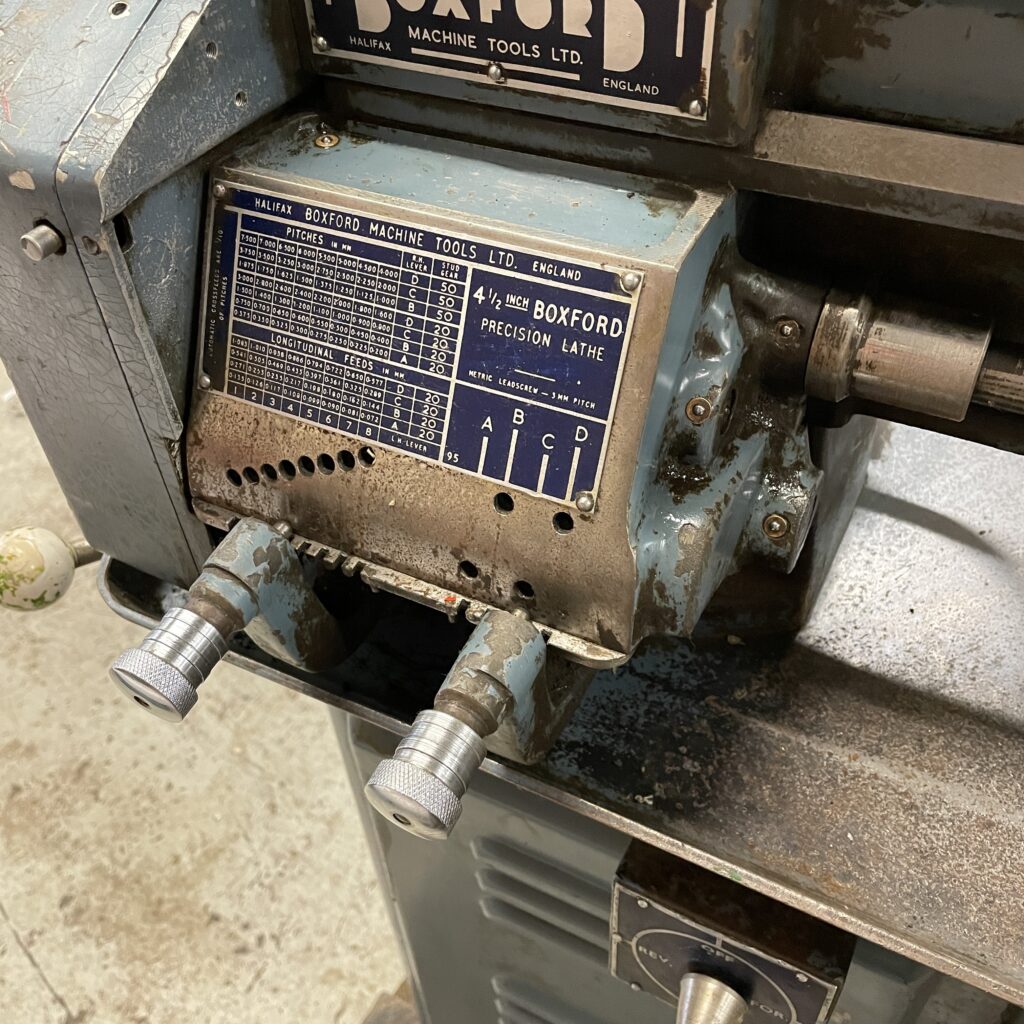
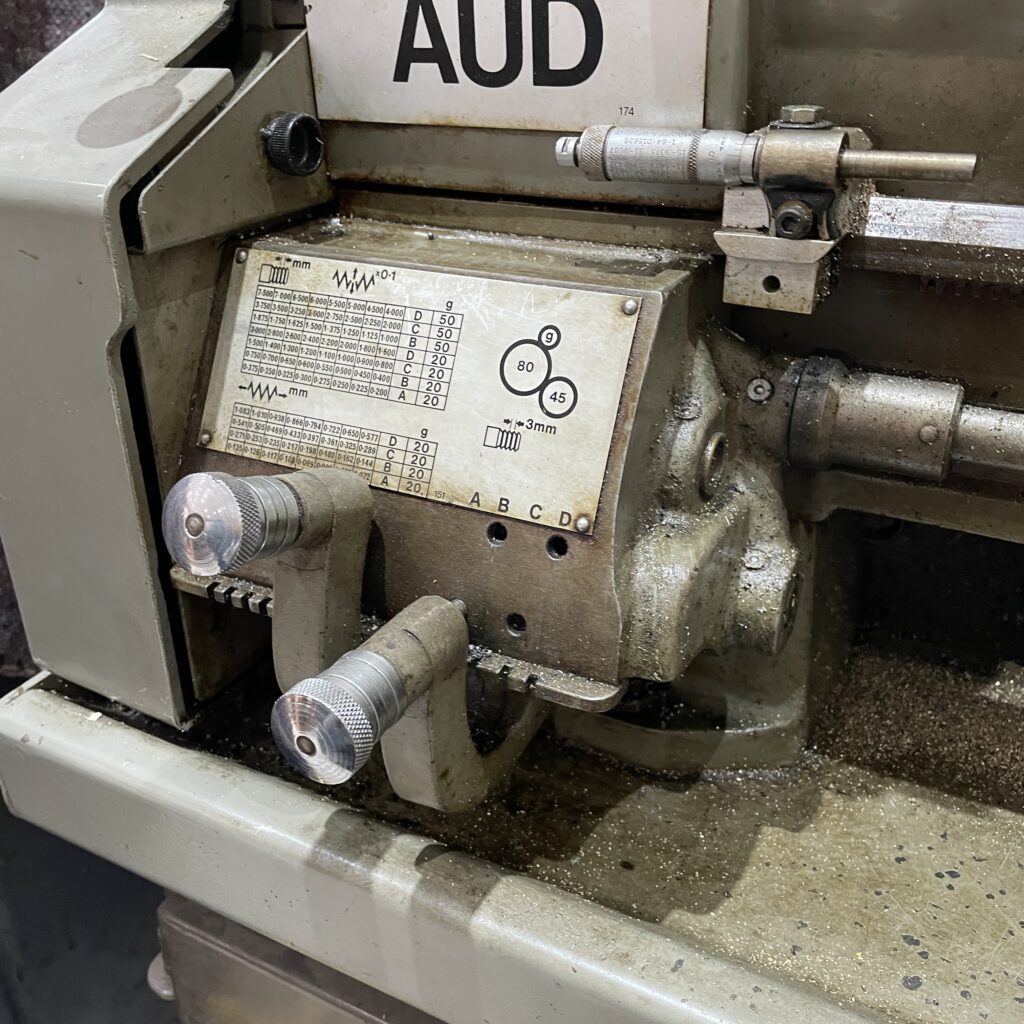
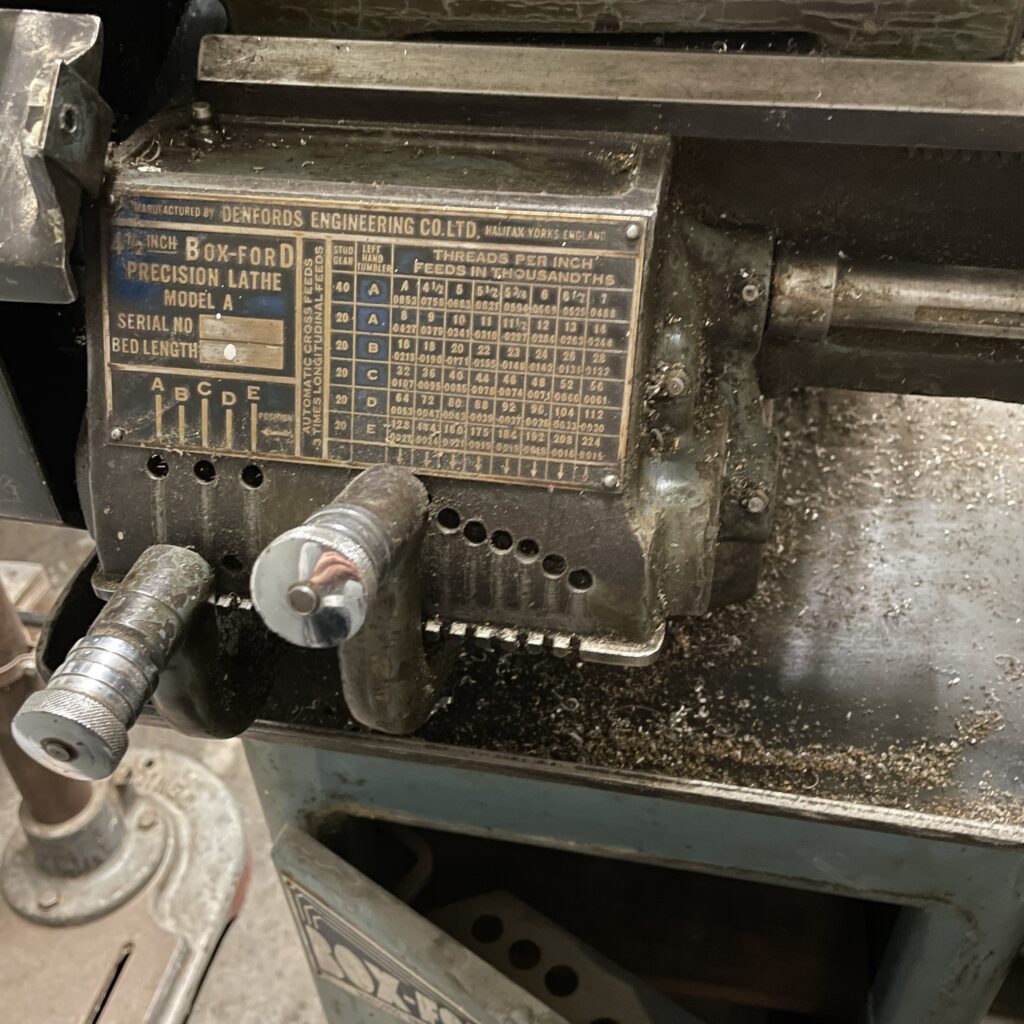
The AUD, ME10, VSL & VSL500 were supplied with either a metric or imperial gearbox
BUD – The BUD is can be identified by having the same apron as the AUD but does not have the gearbox. These machine have the same power feed set up as the AUD but the adjustment of the leadscrew RPM has to be done through the use of changegears mounted inside the gear train cover to the left of the headstock. BUD machines should come with a set of change gears and the ones required will depend on whether the machine is for cutting metric or imperial threads.
Metric BUD And CUD lathes are supplied with the following gears:
16, 24, 28, 30, 2 x 32, 36, 40, 44, 48, 52, 56, 60, 80, 72/18 compound, 54/18 compound, 80 idler
Imperial BUD and CUD lathes are supplied with:
16, 24, 36, 40, 44, 46, 48, 52, 54, 56, 60, 80, 72/18 compound, 80 idler
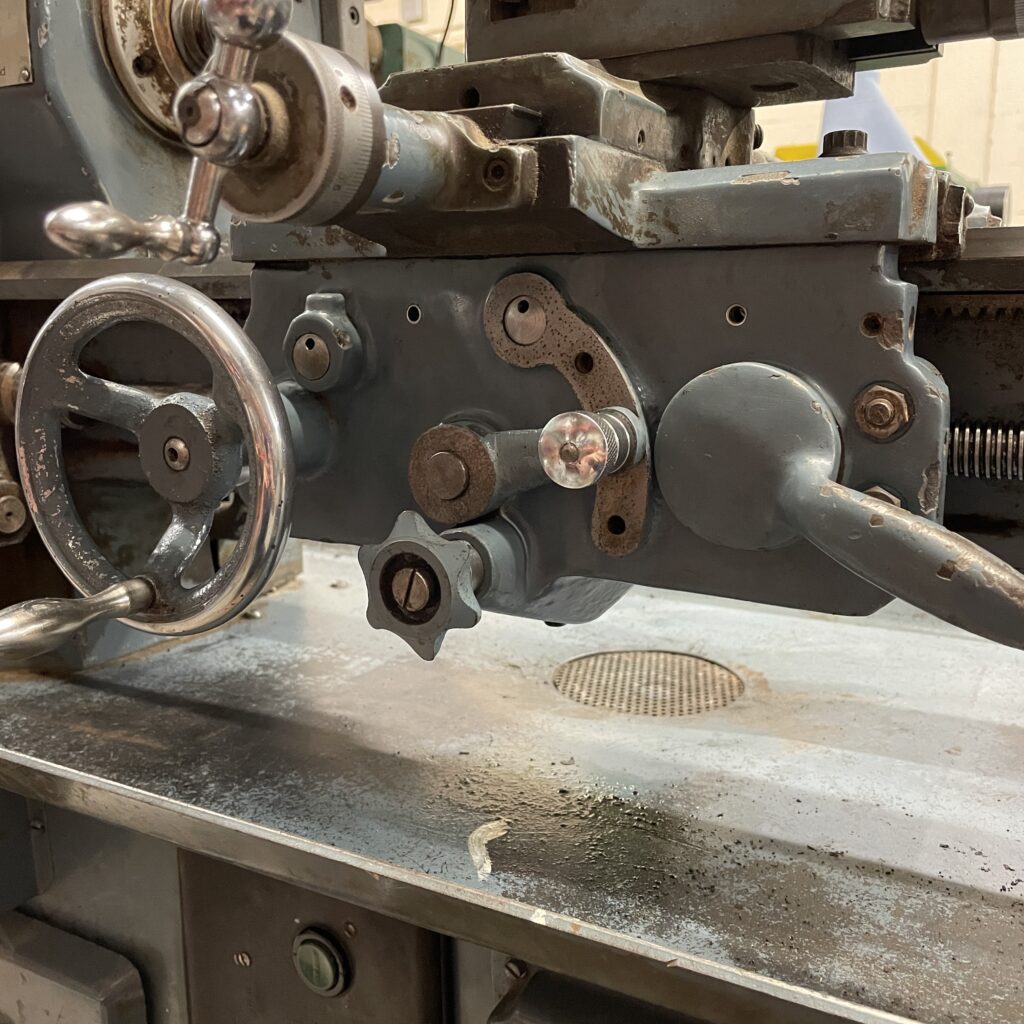

CUD – The CUD model is a more basic machine in the Boxford 3656 series, but is still capable of screwcutting. As with the BUD, the CUD model requires change gears to set the screw cutting pitches. The CUD does not have any power cross feeds but can utilise traverse feeds through the use of the half nuts and change gears. This does however cause more wear to the half nuts.
TUD – the TUD model is the most basic of all Boxford 3656 series lathes. It is a very good machine for learning the basics of lathe work, but its use can be limited through its lack of features. The TUD Boxford lathe is most easily recognisable by the lack of leadscrew. The basic apron only has the traverse handwheel.
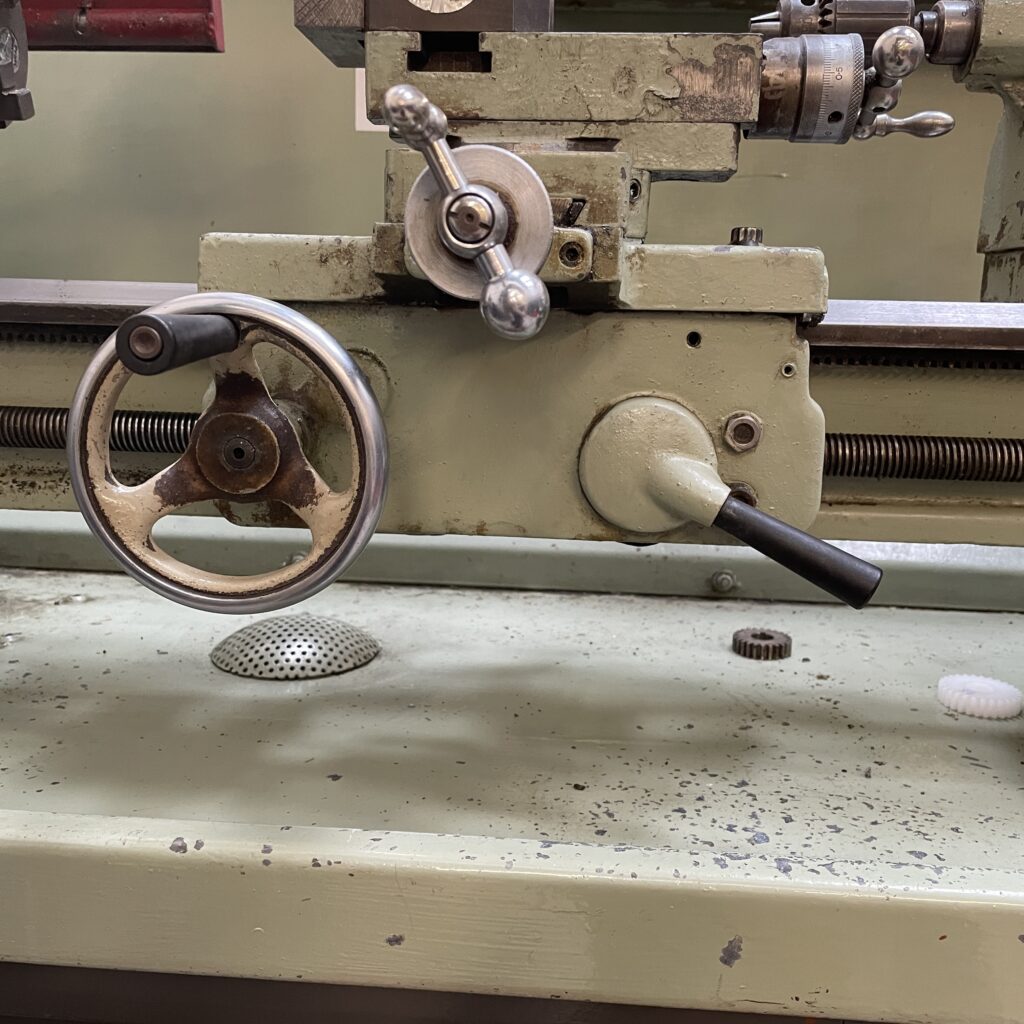
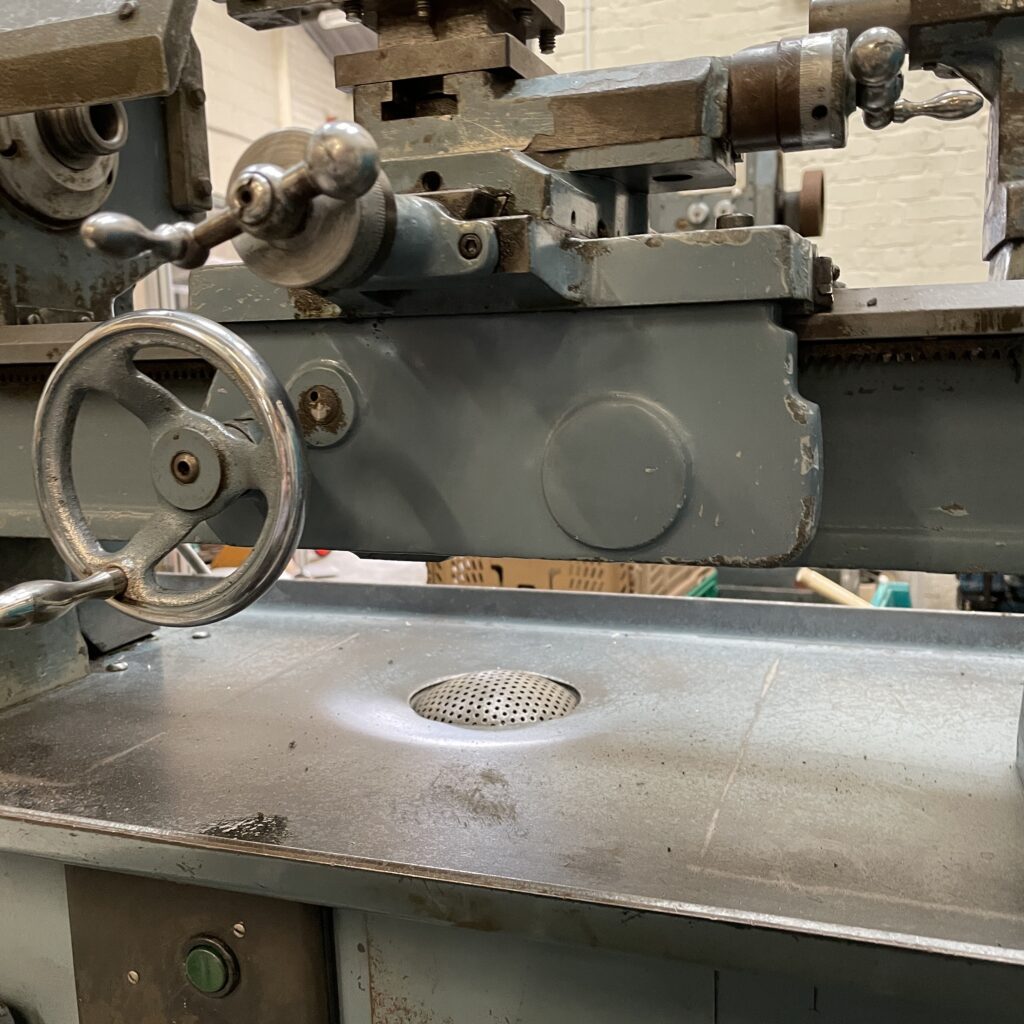
Metric vs Imperial Boxford Lathes
Metric Boxfords were fitted with a 3mm pitch leadscrew. Imperial Boxfords were fitted with a leadscrew of 8 teeth per inch (T.P.I). One method of determining if you have a metric or imperial leadscrew, the author has found the best method is to use a set of vernier calipers and simply setting it to 1 inch and counting the number of complete threads. As a double check, the verniers can be set to 3mm to count one complete thread if it is a metric leadscrew – as pictured below.
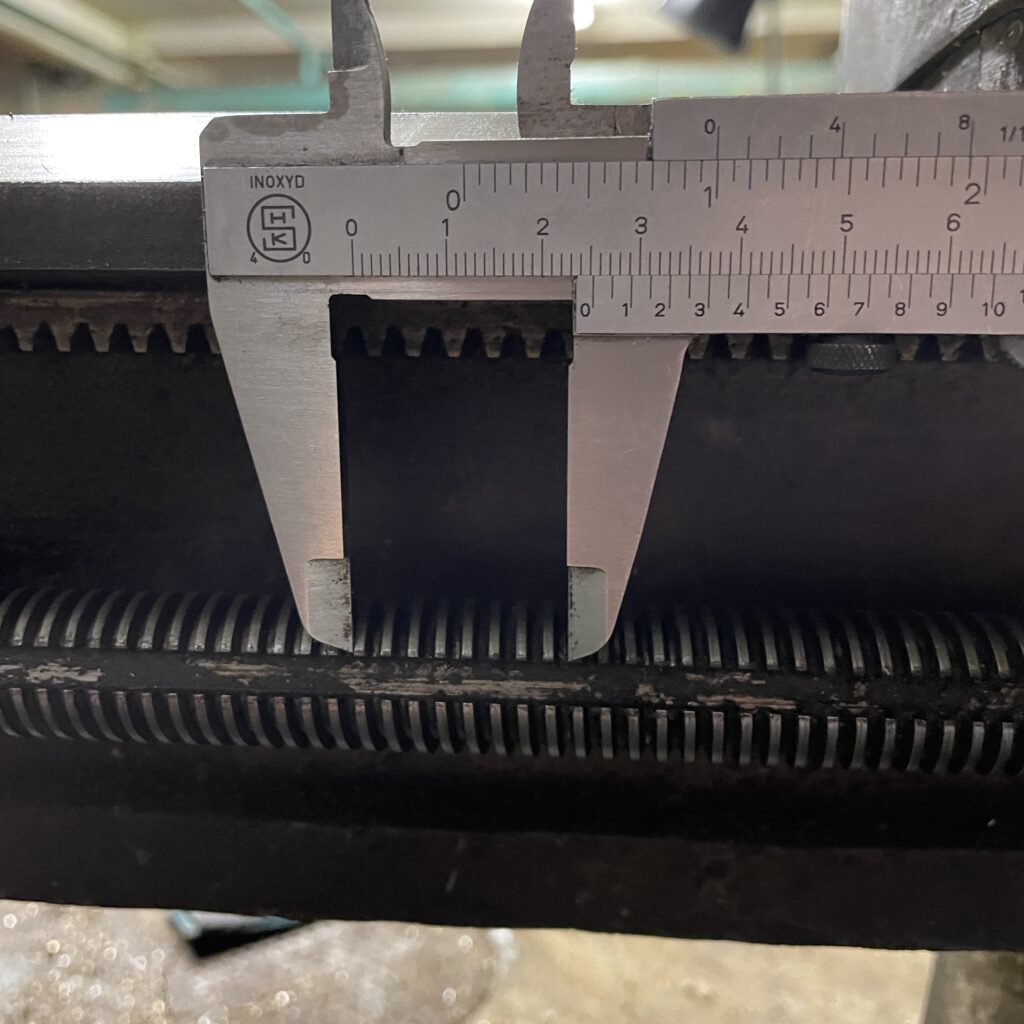
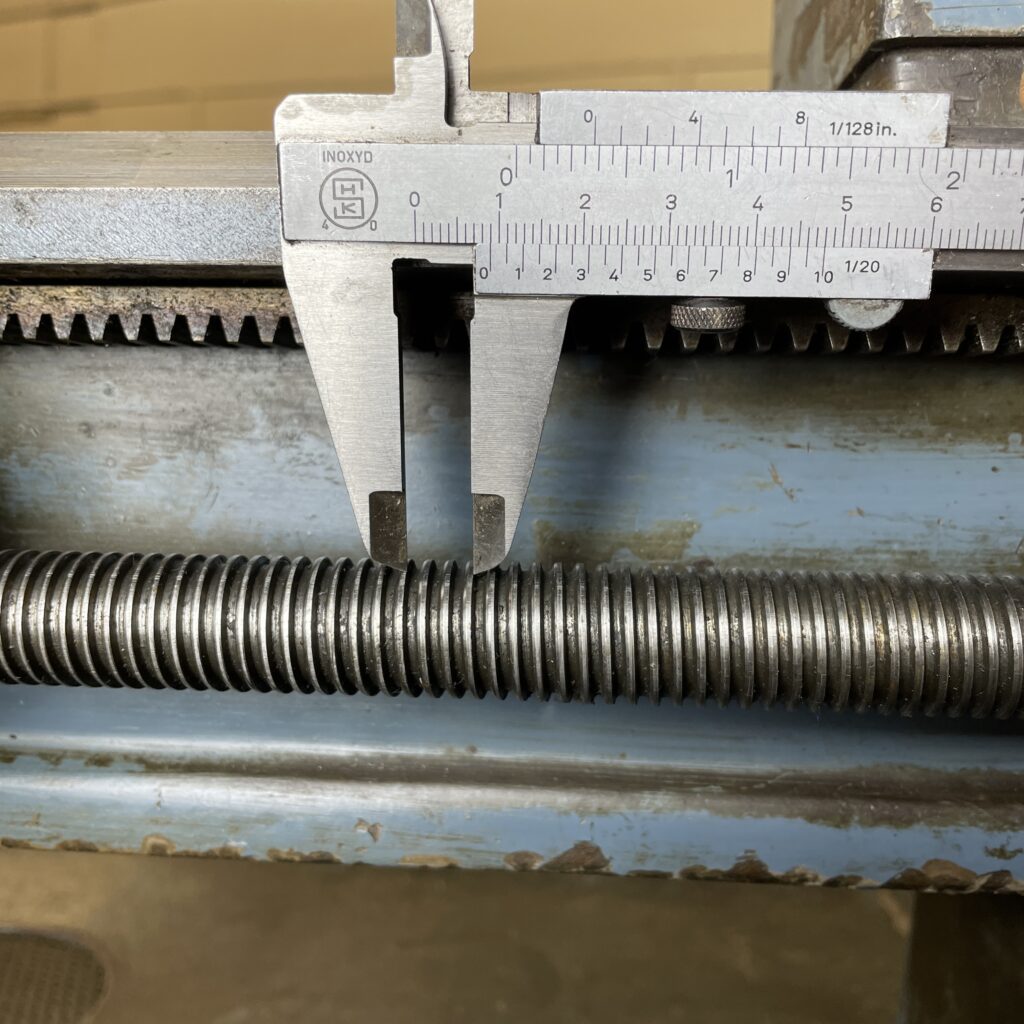
You can determine if you Boxford lathe is either 4.5″ or 5″ centre height by looking at the compound slide. The 5″ centre height machines will have a square compound slide but the 4.5″ machines will have an angled compound slide.
Boxford X10 Series
The Boxford X10 series of lathes was produced after the 3656 series of lathes.
More models of the X10 produced and the naming system is a little more confusing but we can use our knowledge of the 3656 series to understand and compare the new lathes.
The design on the X10 lathes were modular meaning that the parts are easily interchangeable and this lends to machines to easy upgrading and swapping of parts.
There is no official generations of these machines but the features of these machines can be subcategorised into 3 generations
The first generation of these lathes which we will call the Mk1 had a thinner top to the cabinet and the splash guard fits vertically when compared to the Mk2 where the splash guard is on a slight angle.
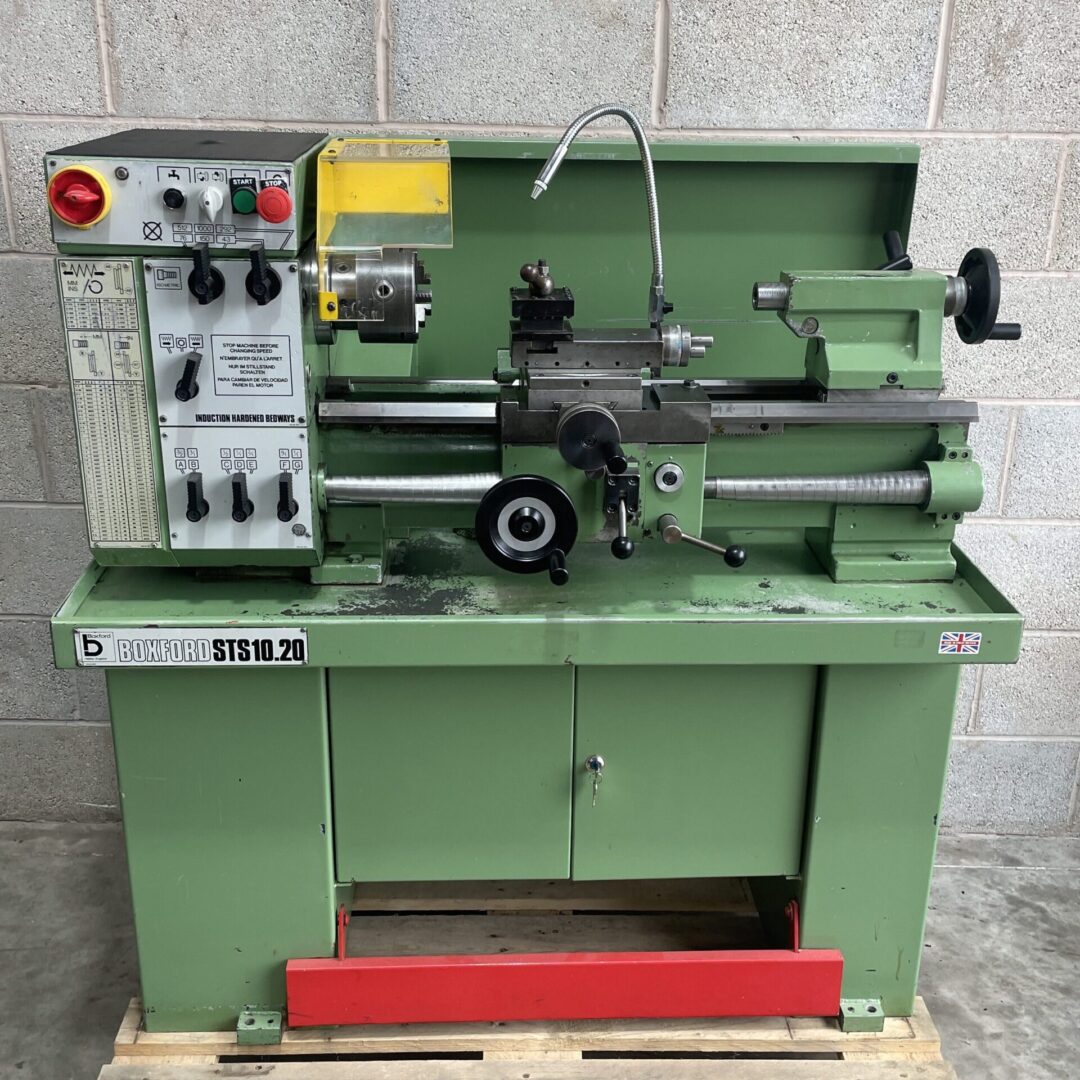

The Mk1 machines were supplied in most commonly a green & yellow or a white & yellow colour scheme.
The Mk2 Lathes have a slight variation to the cabinet design where the splash guard sits at an angle and the front edge of the cabinet is deeper
The Mk3 lathes were the final production of the X10 series and by this point, Boxford had reduced the offering of models to a single specification.
These latest machines named Boxford 330 and had a 13” swing (330mm)
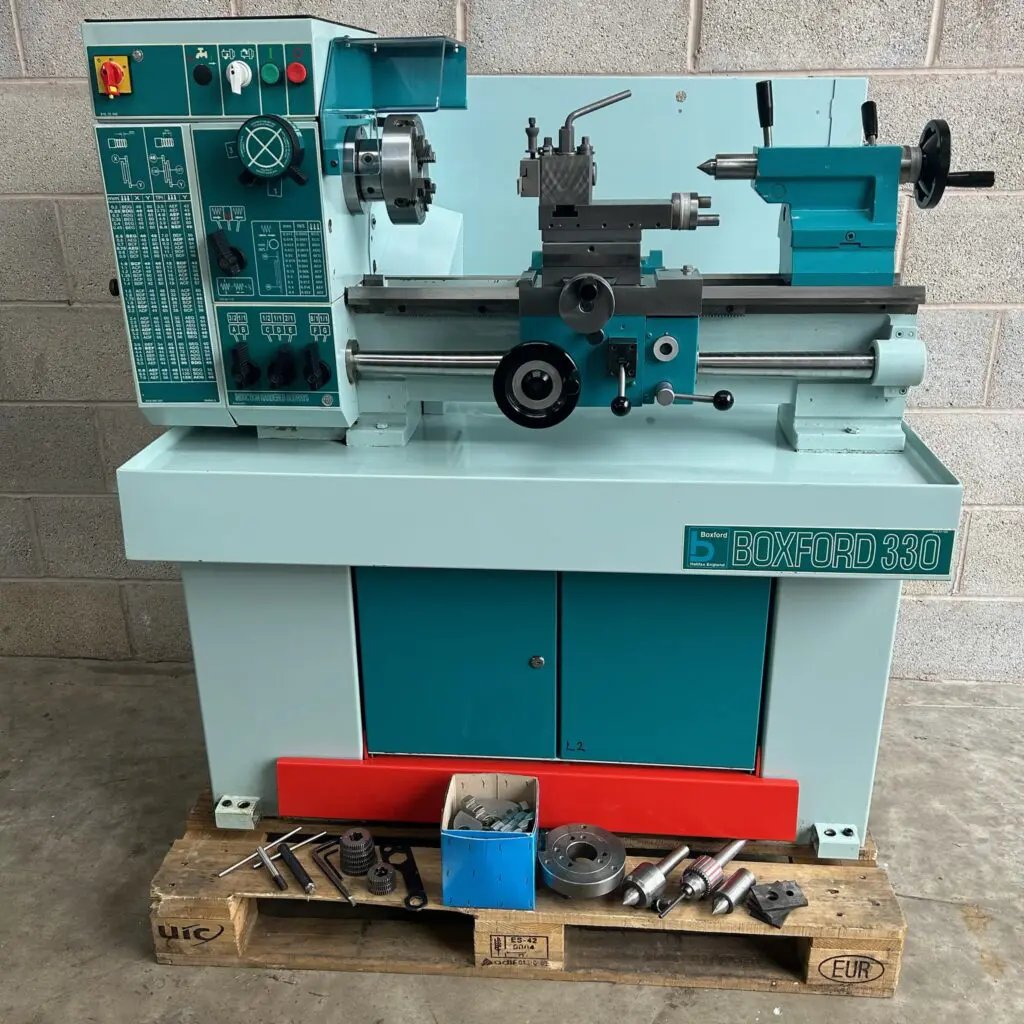
Most of the X10 machines were produced as Metric machines as production had began well after 1965 but there are a few imperial versions known which may have been an option offered by Boxford or available by special request.
To understand the machines completely, we need to look at their specifications.
The machines were offers as either a 6 speed or 9 speed option.
The 6 speed has 2 to handles on the front of the headstock whereas the 9 speed machines have a round dial on the front of the headstock
